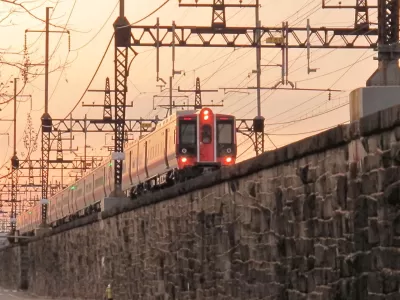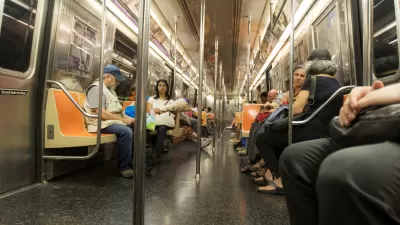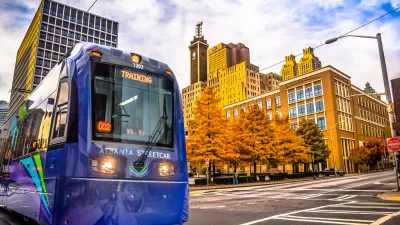Investing in technology and promoting innovation in the transportation sector can further the Biden administration's goals of reducing carbon emissions and improving public transit.

Despite the head-spinning advances in technology in the last few decades, write Tiffany Chu and Daniel Ramot in Bloomberg CityLab, "only a small fraction of public transportation budgets are allocated to innovation and technology, lagging significantly behind other sectors." This, argue the authors(who are also "founders of transit technology companies whose software powers public transportation systems in hundreds of cities across the world"), has hindered the development of effective and equitable transit systems. The federal government should, in their opinion, "radically rethink its approach" to transportation funding and support local agencies in implementing innovations that will improve service.
"If we want to make real progress in creating a new vision for American mobility, the Biden Administration and Congress will need to stop funding transportation like it’s the 1980s. It is time to move past our excessive focus on large highway capital projects and remove limitations that constrain how cities and rural communities deploy public transportation."
Chu and Ramot include several recommendations that they believe can help us "plan smarter transit networks, build safer streets, and launch more nimble services designed to immediately enhance transportation for those who need it most," which include creating dedicated funding to "drive innovation," tying funding to concrete outcomes, and funding transit operations as well as equipment.
FULL STORY: Fixing Transit Is More Than Just Infrastructure

Alabama: Trump Terminates Settlements for Black Communities Harmed By Raw Sewage
Trump deemed the landmark civil rights agreement “illegal DEI and environmental justice policy.”

Planetizen Federal Action Tracker
A weekly monitor of how Trump’s orders and actions are impacting planners and planning in America.

The 120 Year Old Tiny Home Villages That Sheltered San Francisco’s Earthquake Refugees
More than a century ago, San Francisco mobilized to house thousands of residents displaced by the 1906 earthquake. Could their strategy offer a model for the present?

In Both Crashes and Crime, Public Transportation is Far Safer than Driving
Contrary to popular assumptions, public transportation has far lower crash and crime rates than automobile travel. For safer communities, improve and encourage transit travel.

Report: Zoning Reforms Should Complement Nashville’s Ambitious Transit Plan
Without reform, restrictive zoning codes will limit the impact of the city’s planned transit expansion and could exclude some of the residents who depend on transit the most.

Judge Orders Release of Frozen IRA, IIJA Funding
The decision is a victory for environmental groups who charged that freezing funds for critical infrastructure and disaster response programs caused “real and irreparable harm” to communities.
Urban Design for Planners 1: Software Tools
This six-course series explores essential urban design concepts using open source software and equips planners with the tools they need to participate fully in the urban design process.
Planning for Universal Design
Learn the tools for implementing Universal Design in planning regulations.
Clanton & Associates, Inc.
Jessamine County Fiscal Court
Institute for Housing and Urban Development Studies (IHS)
City of Grandview
Harvard GSD Executive Education
Toledo-Lucas County Plan Commissions
Salt Lake City
NYU Wagner Graduate School of Public Service





























